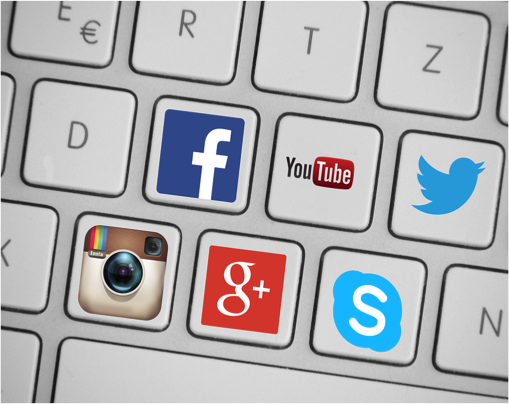In recent years, social media has impacted the way in which users communicate with their friends, family, colleagues, as well as how they communicate with people they have never met offline.
Whether comprised of friends or followers, social networking sites (SNS) have audiences. These audiences are made up of individuals who view, react, and engage with shared content.
Platforms such as Facebook, Instagram, Twitter, and Snapchat allow users to present themselves and their content in any way that they choose for their audiences. With that being said, there’s a burning question that plagues social media users each and every day – what is the difference between a real user identity and a fabricated online identity?
Content

Social media users’ content often highlights who they spend time with, where they go, what they do, etc. Day after day and post after post, their content forms their online identity. In most cases, this online identity reflects who a person is offline. Connectivity, expression, and individualism are all factors that play into a user’s content.
Individual users create unique online identities and in turn, are influenced by their audiences and the responses they receive. Audience engagement drives users to continue to post online.
Sharing personal information on a public platform creates a close bond between users. Keeping this in mind, influencers place their followers in their innermost circle, maintaining an open line of communication across different platforms.
Online Identities
While in most cases online identities mirror offline personalities, this does not always hold true!
The majority of social media users can attest that receiving attention on their posts (whether it be tweets, statuses, photos, etc.) is what they enjoy most about the world of social media. Audience engagement is what drives most users to post consistently.
Social media audiences can greatly influence an account’s content and even pressure users to maintain a certain image, which is typically an elevated version of themselves. In some cases, content is deliberately exaggerated to gain a desired reaction – or a reaction in general!
When a user’s content is fabricated, their authentic self is lost; thus an online identity is born.
Audience Relationship
 The makeup of a user’s audience can vary based on the given platform. Typically, a user’s list of followers includes friends, family, peers, neighbors, and acquaintances.
The makeup of a user’s audience can vary based on the given platform. Typically, a user’s list of followers includes friends, family, peers, neighbors, and acquaintances.
If users personally know the majority of their audiences, why are they so inclined to portray enhanced versions of themselves online? A popular theory is that many users are driven by competition with their peers.
While it may vary on a case-by-case basis, the growth of online personas has driven users to create more interesting versions of themselves on their profiles. Editing, censoring, and embellishing the truth are only a few ways that online personalities are created, often for the purpose of audience enjoyment.
With each post, users are faced with determining what is real, and what is a fabricated online identity. Is there a certain level of embellishment that’s accepted, but also a point where the audience will draw the line?
Do you find yourself enhancing your social media posts for the enjoyment of your audience? How closely does your online identity match your real life personality?
 Kaitlin Crocilla is a 21-year old senior at the Ramapo College of New Jersey. She is currently studying Global Communications & Media with a strong interest in advertising and public relations. During her summer interning with lotus823, she is looking forward most to being exposed to and understanding how an integrated marketing firm operates internally. In her spare time Kaitlin enjoys traveling and writing, as she is one of the editors of her college’s newspaper.
Kaitlin Crocilla is a 21-year old senior at the Ramapo College of New Jersey. She is currently studying Global Communications & Media with a strong interest in advertising and public relations. During her summer interning with lotus823, she is looking forward most to being exposed to and understanding how an integrated marketing firm operates internally. In her spare time Kaitlin enjoys traveling and writing, as she is one of the editors of her college’s newspaper.








